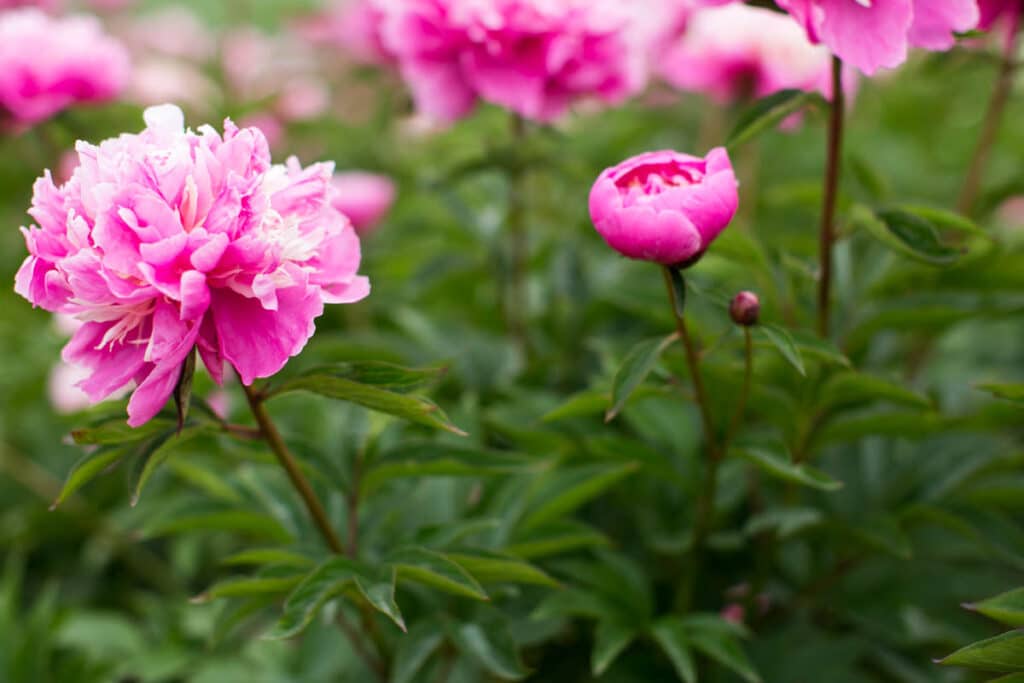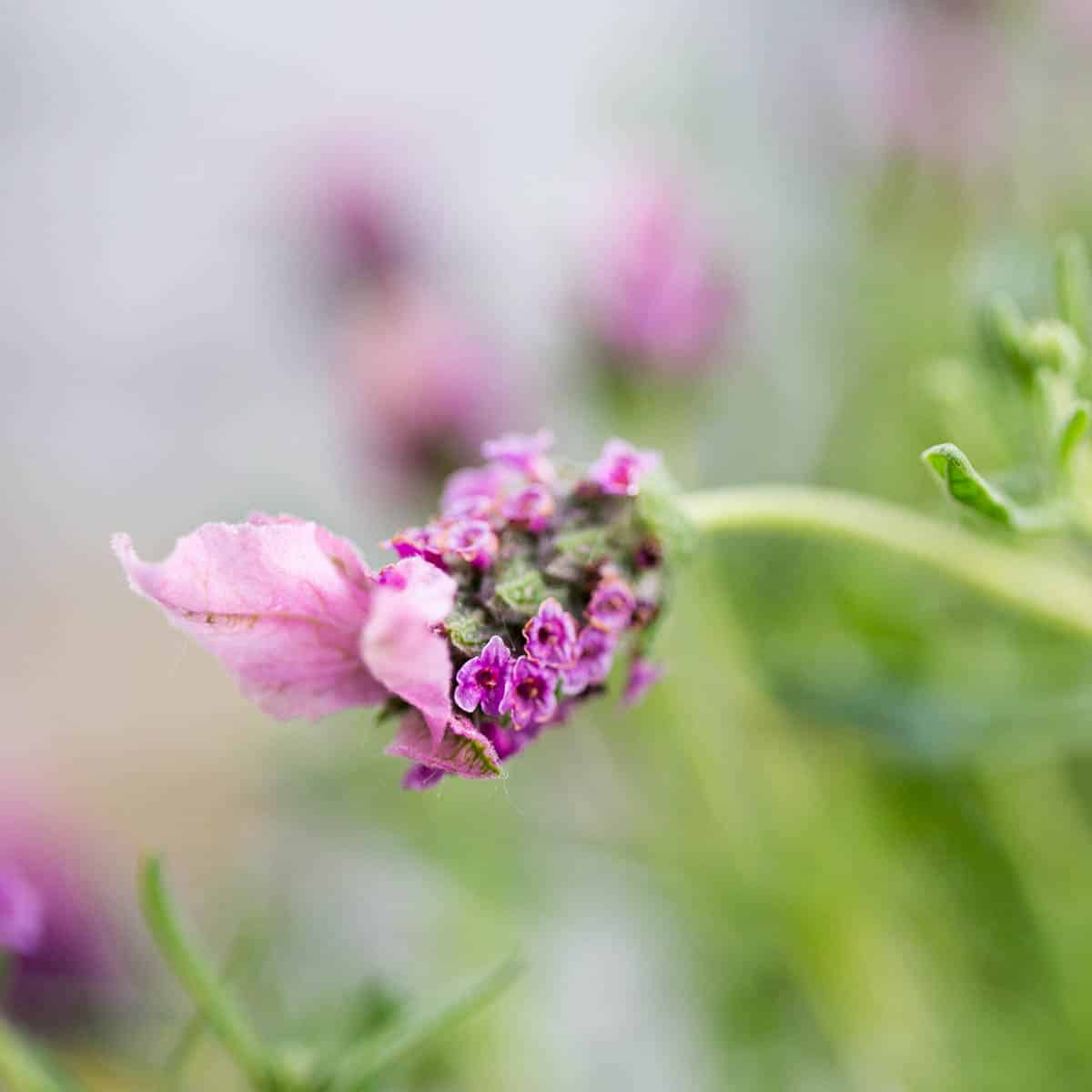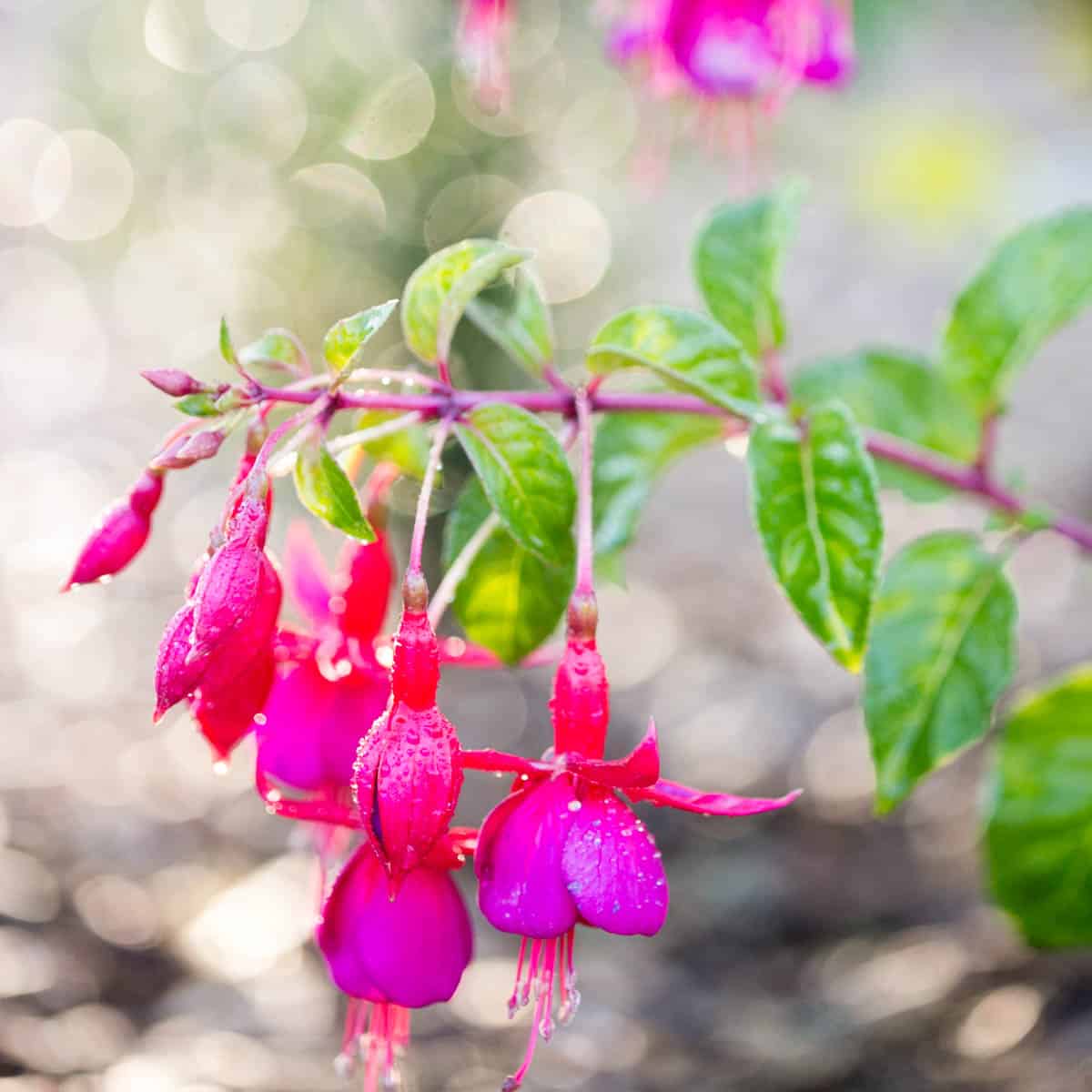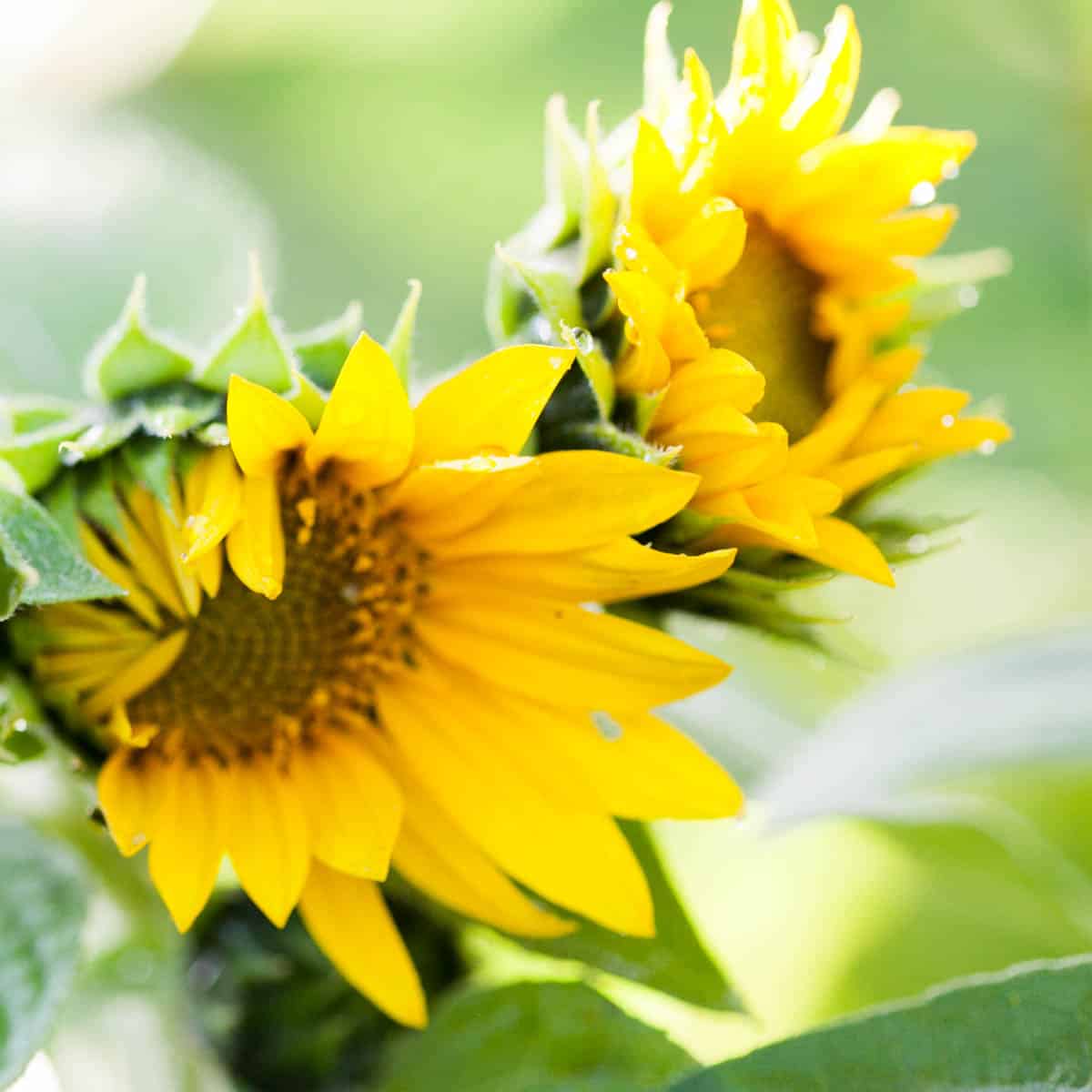The Best Soil For Peonies
Want bigger peony blooms? Learn how to create the best soil for peonies here! Peonies are beautiful flowers that light the springtime garden with generous blooms.
You may not realize it, but one of the reasons why peonies look so stunning is because of the rich, fertile soil they grow in.

That rich soil gives us the luscious spring flower buds we all love so much.
The best soil for peonies is a loamy, well-drained soil rich in organic matter with the perfect pH level—the flowers growing in this perfect soil will be big, fragrant, and prolific!
Whether you’re a pro at gardening or just starting, understanding soil is crucial to growing beautiful peonies year after year with little effort.
Hi, I’m Jamie. I’ve spent years growing peonies in several different home gardens, so I’m excited to share my knowledge with you so you can get the best results from your peony plants.
This post contains affiliate links.
Understanding Soil Type
Knowing the difference between well-draining soil, sandy soil, and heavy clay soils is essential when growing peonies.
For those of us exploring the world of herbaceous peonies and tree peonies, it’s important to know that these lovely flowers need a specific type of soil to grow their best:
- Well drained soil: Soil is like a sponge sitting in a bowl of water. If the water drains away slowly, leaving the sponge damp but not soaked, that’s what well-drained soil is like—perfect for happy peonies.
- Sandy soil: Now, imagine using a sponge that water evaporates from quickly, leaving it dry very fast—that’s sandy soil! It drains too quickly, leaving our peony friends needing more water.
- Heavy clay soils: On the flip side, heavy clay soils are like sponges that refuse to let any water go, suffocating the plant’s roots.
Peonies prefer well-draining soil, where water, soil, and air are balanced, giving these plants the foundation they need to grow their large flowers. These long-lived plants need this nutrient-dense soil to support their long lifespan.
Learn how to harvest peonies for a longer bloom time here.

The Ideal Soil pH for Peony Growth
Key takeaway: peonies prefer acidic soils. Soil can be tested and amended to reach a slightly acidic level.
A big part of successfully growing peonies is the pH level of your soil. Peonies do best in soil that’s slightly acidic, with a pH between 6.5 and 7.0.
It may sound technical, but it’s pretty simple to adjust your soil. And trust me, it’s worth it for those stunning peony flowers!

Checking your soil’s pH is the first thing to do for perfect peony soil. You can get a simple testing kit from your local garden center or order one here.
If the test says your soil is too alkaline for peonies, adding organic matter is the first step to increasing acidity. Simply add quality compost to your soil and mix well.
Mulches such as pine needles and bark can be added to the top of the soil to increase acidity. The mulch will decrease the pH level as they break down over time.
Sulfur can also be added to the soil to adjust the pH, but use caution when applying and don’t overdo it.
Though it’s not an overnight fix, adding organic matter and mulch to your flower beds will increase acidity. Over time, your soil will become the ideal spot for your peonies, rewarding you with beautiful flowers for years.
Amending Soil For Peonies
Adding a generous helping of organic matter to the soil can work wonders for your peonies, turning good garden soil into a peony paradise. In addition to altering the pH, organic matter nourishes your plants.
Whether it’s your garden peonies or those stunning herbaceous perennials, organic matter will provide much-needed nutrients to support your plant roots, flowers, and foliage.
How To: Mix in some compost or decayed leaves at the bottom of the planting hole before planting your tubers, and blend well.

This simple step enriches the soil, creating an environment where peony roots can breathe and soak up nutrients and water efficiently, supporting those large flowers we all adore.
When planting, I also add a generous scoop of bone meal into the soil, which supports the plant’s root growth.
The kind of soil peonies love is hard to come by. Unless you live in a fertile region, you must create it by adding nutrients to the soil.
The organic elements in the soil also increase drainage, helping prevent fungal diseases and root rot. Proper planting in fertile soil is vital to healthy peony flowers that bloom year after year.
Watering Needs & Drainage
When it comes to watering and how well the soil drains, peonies are a bit picky—kind of like Goldilocks. The soil has to be just right.
Peonies need soil that retains some moisture but is able to drain. Avoid soggy soil for these plants.
If there’s too much water, their roots can rot. But if there’s too little, you might never see those spectacular blooms. Proper soil drainage is non-negotiable for these popular perennials.
Peonies love to have a “comfortable bed.” The perfect soil stays moist but not too wet and full of nutrients but not heavy.
If you’re dealing with heavy clay soils, don’t worry. Adding lots of organic materials can help make it better, improve how water moves through it, and give your plants more food.
And if you’re planting new peony plants, consider raising the bed slightly above ground level to ensure water moves away from the roots, giving them the perfect drainage conditions they crave.
Recognizing and Preventing Peony Diseases
As humans we love a sunny spot to lounge in for vitamin D. Likewise, we must give our peonies good soil to prevent disease.
Let’s learn how the right soil can keep two disease, botrytis blight and powdery mildew at bay.
The secret to preventing disease is good drainage, the correct type of soil, and adequate spacing for airflow.
Powdery mildew occurs when plants are too close together and kept too wet. Botrytis blight is a fungal disease that can cause brown spots to develop and the flowers to decay.
Overcrowding, poor soil, and too much water can cause both of these conditions.
A sunny spot, fertile soil, and proper spacing will keep botrytis blight and powdery mildew away. Ensure your soil has good drainage and a healthy dose of organic material protects your peonies’ health.
Happy soil equals happy peonies, free from the worry of those all-too-common soil-related diseases.

The Best Time to Plant
Fall is the best time to plant peony tubers. Mid to late fall is the perfect time for those in cooler climates that experience cold winters. Late September to early November is the sweet spot.
Fall planting allows the peony root to settle in without the stress of blooming or the harsh summer sun. This gives your peonies ample time to establish a strong root system to support those large spring flowers.
If you’ve missed the fall planting window; you can also plant peonies in the spring. Ensure all signs of frost have passed to prevent damage to your plant.
When planning your beautiful peony garden, mark your calendar for the proper planting time.

Blooming Perfection
The right soil can transform garden peonies from simple plants into striking blooms. We have explored the basics: good soil drainage, the proper pH, essential soil nutrients, and the importance of drainage.
The soil for peonies isn’t just the dirt they grow in but the foundation of their blooming success!
Remember that planting your peonies in at the right time—either in late fall or early spring, with a cool sky overhead and in a garden bed prepared with rich soil —sets the foundation for beautiful blooms.
Here’s to your success with peony flowers, not just this season but for many years to come!






